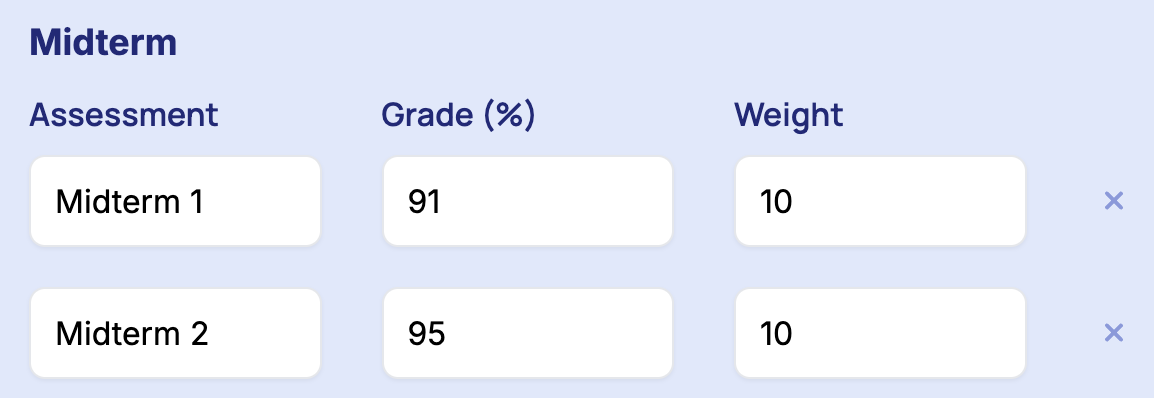Calculating midterm grades can be a straightforward process if you understand the components involved and the method for combining them. Whether you're a student trying to figure out your current standing or a teacher looking to provide accurate assessments, this guide will walk you through the steps to calculate midterm grades effectively.
Using “Overall Grade Calculator” to Calculate Midterm Grade
To learn how to calculate the overall grade using the simple Midterm Grade Calculator, read through these easy steps:
Enter Midterm Grades: Grades obtained in midterm exams.
Enter Other Task Grades: Grades from assignments, quizzes, projects, or any other coursework.
Enter Final Exam Grades: The grade expected or obtained in the final exam.
Calculate Overall Grade: The calculator will automatically compute the overall grade based on the inputs.
How to Calculate Required Midterm Grade?
To learn how to calculate the required midterm grade using the Required Midterm Grade Calculator, read through these easy steps:
Enter Midterm Grades: Enter the grades obtained in midterm exams.
Enter Other Tasks: Enter your grade, and weight regarding your projects or assignments.
Enter Final Grades: Enter the grade and weight of the final exam.
Check the Grade: Check the midterm grade in the “Overall Grade” section.
This calculator ensures you can determine the grade needed on any future assessment to achieve your desired final course grade.
Tips for Accurate Calculation
Double-check the Weights: Ensure that the weights add up to 100%. Misunderstanding the weight of each component can lead to incorrect calculations.
Consistent Format: Make sure all scores are in the same format (usually percentage) before starting your calculations.
Keep Records: Maintain a record of all your scores and the corresponding weights to make the calculation process smoother.
Use Tools: Utilize spreadsheets or online grade calculators to automate the process and reduce the chance of errors.
Conclusion
Calculating your midterm grade involves gathering your scores, understanding the weights of each component, converting scores to percentages, multiplying by weights, and summing up the weighted scores. By following these steps, you can accurately determine your midterm grade, providing you with valuable insight into your academic performance and areas that may need improvement.







